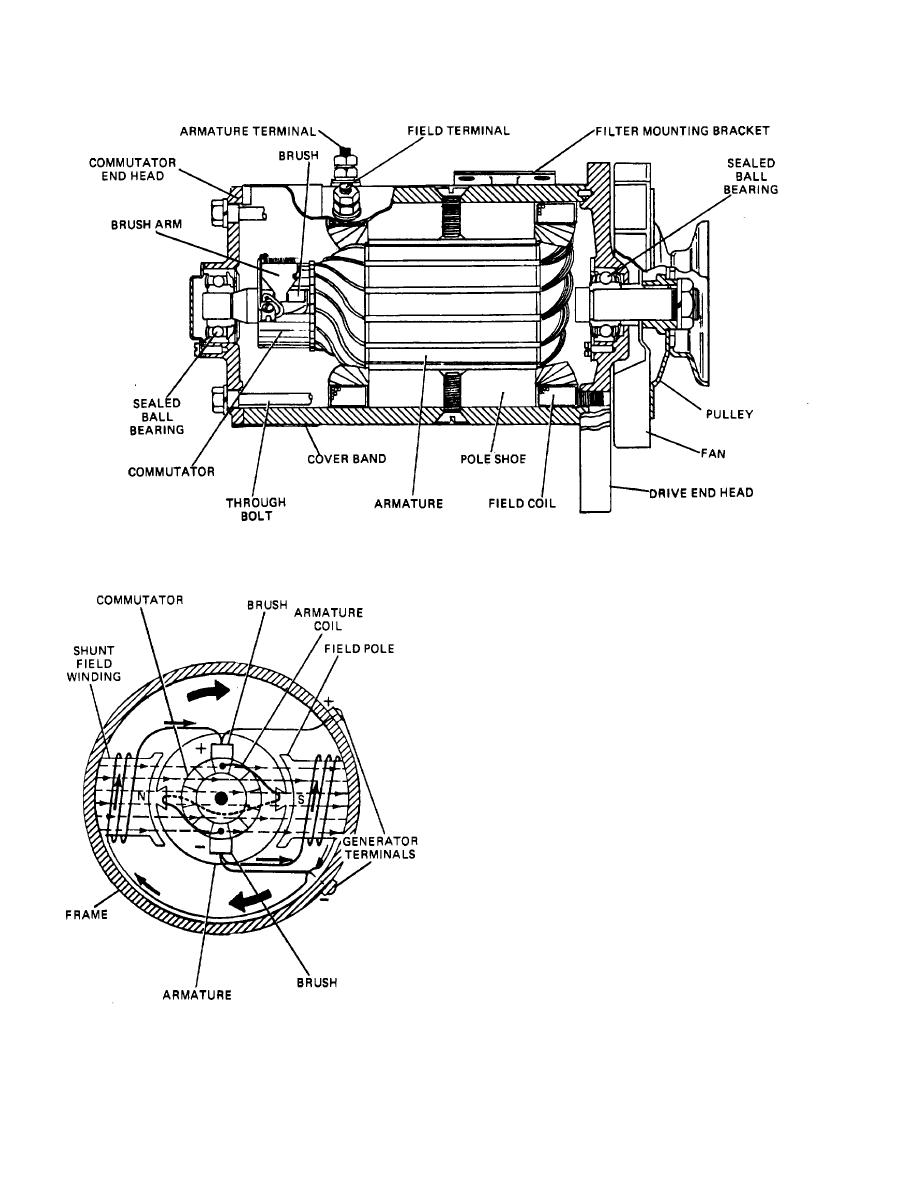
TM 9-8000
Figure 13-5. Shunt-Wound Generator.
rotated, the armature coils will cut the weak magnetic
field (residual magnetism) retained by the poles and set
up a slight voltage, usually 1 to 1 volts, across the
brushes. In this particular case, the upper brush will be
positive (+) and the lower brush will be negative (-). This
voltage is sufficient to cause a small current to flow from
the negative brush through the field winding around the
pole pieces to the positive brush. If the magnetic effect
of this field current is of the same polarity as the
remaining magnetism, the pole strength will be
increased. This, in turn, will increase the magnetic field
through the armature. Because the armature coils then
will be cutting more magnetic lines of force per
revolution, the voltage across the brushes will be
increased. An increase in brush voltage increases the
field strength which, in turn, increases the armature
output. The armature voltage helps the field and the field
helps the armature voltage until the generator reaches its
normal operating volt- age at the specific running speed.
This process is called building up the generator voltage.
f.
Residual Magnetism.
The importance of the
magnetism retained by the poles should be noted in the
description of generator operation because it serves as a
foundation for building up the generator voltage.
Residual magnetism is
TA233545
Figure 13-6. Shunt-Wound Generator
Operation.
13-5



 Previous Page
Previous Page
